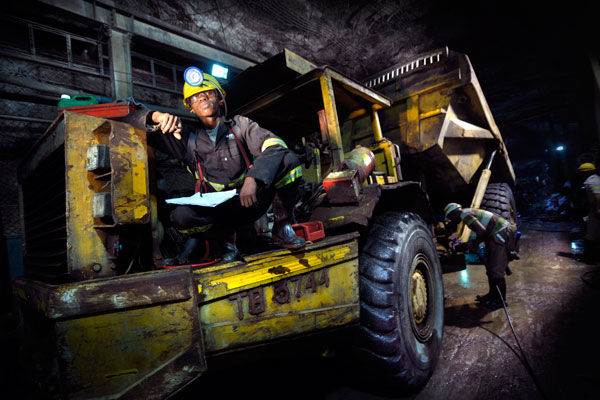Nick Holland, CEO Gold Fields, gave a presentation entitled The Gold Mine of the Future at Mines and Money in London last week. In it he pointed out that partnering with OEMs will become increasingly critical in the future to harness best-of-class technologies. Gold Fields as well as with the traditional equipment and technology suppliers has also established relationships with Business Science Corporation, Amazon, NewTrax, FTP Solutions, NextGenOpX, IoT.Nxt, Trimble and others to implement technological advances such as rugged sensors and 3D vision and mapping software; used in areas such as mapping and inspection; operator safety in the form of advanced obstacle detection and warning; stockpile monitoring; geological monitoring; enhanced tele-remote operation; and fleet tracking with real time monitoring underground.
The company also gave some case studies of where it has implemented a number of other technology applications at its operations. Aerial and surface drones at its Australian and Ghanaian mines have improved its exploration efforts and aerial mapping. Gold Fields uses different drone technologies to capture high resolution aero-magnetic data, particularly over salt lakes (St Ives and Granny Smith), take aerial photographs of tenements (Australian mines), for early stage geological mapping of tenements (Australian mines), measure stockpile volumes in a short space of time (Tarkwa). This is “to improve the way we capture and process data for geology, geo-technical, material movements and reconciliation. Aerial photography of our tenements is now completed in hours –not days or weeks.” Equipment includes Trimble aerial drones. For the salt lake drones a TRAMPE (Tethered Rotary Airborne Platform) and SKIMPI (Sled Kart Instrument for Magnetic Prospectivity Imaging) are used, with scoping drones at Tarkwa.
In production examples, South Deep has installed surface remote rock breaking equipment. A remote controlled hydraulic arm breaks the rock that has been transferred from the stopes to the ore pass system. It is too dangerous to do this manually – with the system bringing significant safety and productivity improvements. Also at South Deep, destress mining at South Deep means optimal extraction of the orebody through bulk mining methods in a de-stressed zone. It replicates 1,200 m stress conditions at 2,600 m below surface and allows mechanised bulk mining at depth. Preconditioning of the destress ore-body is carried out by pre-drilling and fracturing the rock to prevent transfer of energy from seismic events to the rock-face. Destress mining reduces vertical ore-body stresses by over half
It makes use of high profile trackless equipment to minimise exposure to high field stresses and makes use of backfill, which reduces the attenuation of rock mass response to dynamic loading and reduces energy release rates in the proximity of the face.
South Deep has also replaced borehole cameras and other observational methods used to determine the effectiveness of preconditioning blasts with ground penetrating radar in the form of a Reutech Sub-Surface Profiler. This means fast and accurate identification of rock structures, including blast induced fracturing. Data can be seen in real-time, reducing the turn-around time for operators to continue mining. A reduction in face bursts has been seen since implementation; and this is expected to continue.
St Ives in Australia has replaced a semi-automated fleet management system with a Wenco Fleet Management System (started in 2016). This project includes an upgraded data communication network; trucks equipped with specific IDs; drones providing real time truck movements; fleet management control from a Data Warehouse to visualise and act on real-time data received, and culture change programmes focusing on control and business improvements. The outcome is that the Wenco system has contributed towards a 17% increase in production at the mine over the past year.
Finally Gold Fields is using Steinert ore sorting equipment at Agnew. Agnew is working with Steinert to improve sorting of underground stope material. This will sort underground stope material based on quartz content, helping to remove diluting material with no quartz and retain lower tonnage, and a maintain a higher grade mill feed. This has reduced processing costs by not processing diluting material; increased available capacity in the CIL plant; reduced underground cutoff grades through reduced processing costs; and opened up new underground stoping areas due to reduced cutoff grades.











